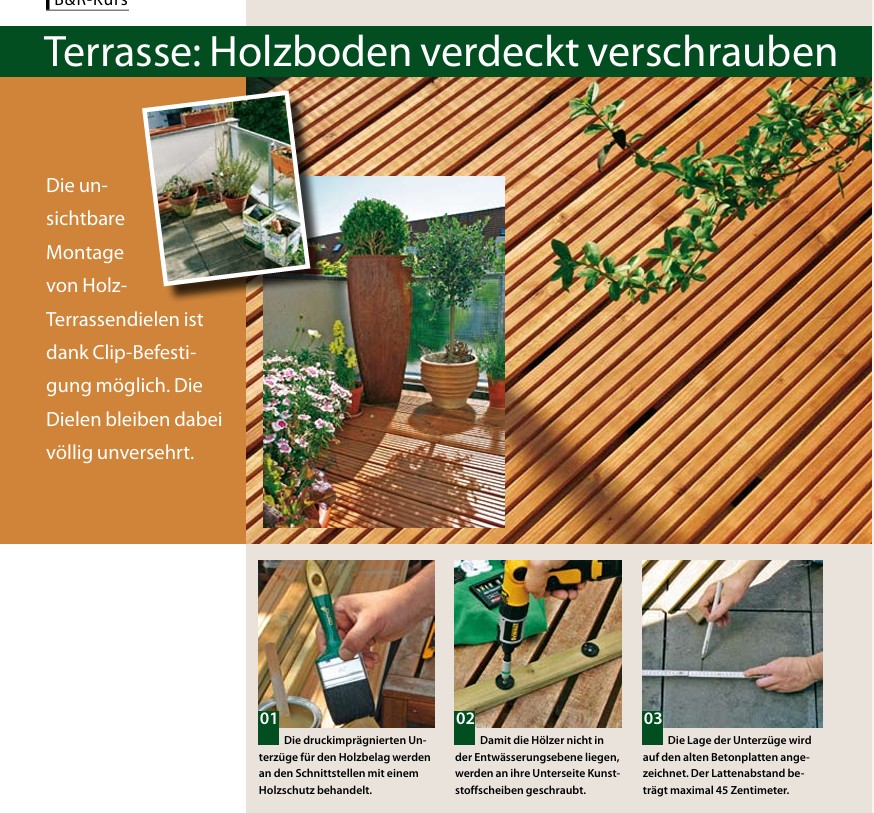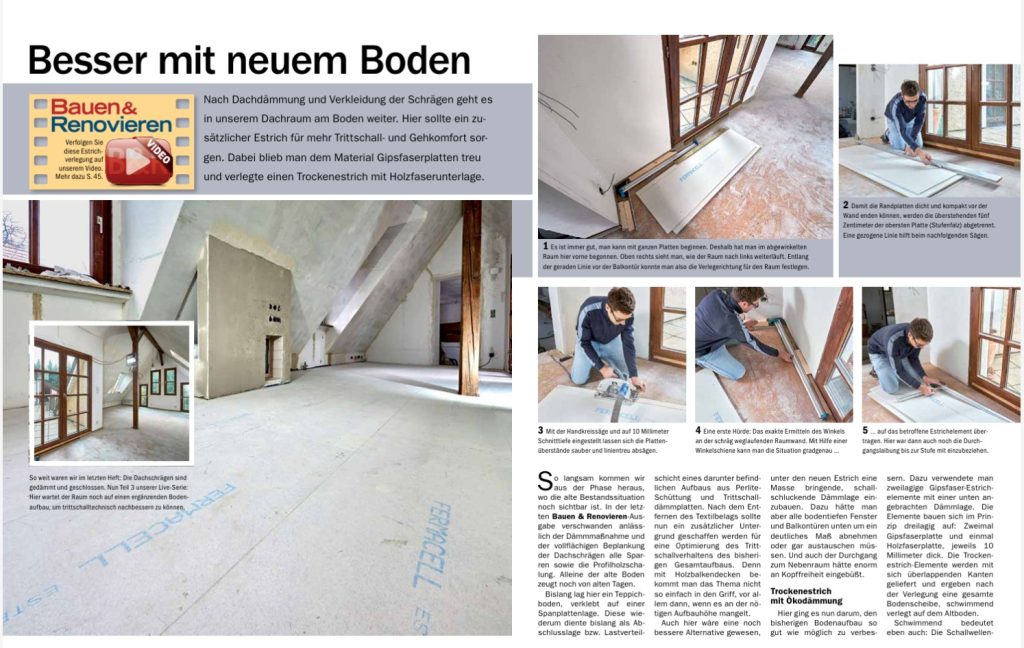
In diesem Dachraum soll ein zusätzlicher Estrich für mehr Trittschall- und Gehkomfort sorgen. Dabei wurde Trockenestrich mit Holzfaserunterlage verlegt.
So langsam kommen wir aus der Phase heraus, wo die alte Bestandssituation noch sichtbar ist. In der letzten Bauen & Renovieren-Ausgabe verschwanden anlässlich der Dämmmaßnahme und der vollflächigen Beplankung der Dachschrägen alle Sparren sowie die Profilholzschalung. Alleine der alte Boden zeugt noch von alten Tagen. Bislang lag hier ein Teppichboden, verklebt auf einer Spanplattenlage. Diese wiederum diente bislang als Abschlusslage bzw. Lastverteilschicht eines darunter befindlichen Aufbaus aus Perlite-Schüttung und Trittschalldämmplatten.
Optimierung des Trittschallverhaltens
Nach dem Entfernen des Textilbelags sollte nun ein zusätzlicher Untergrund geschaffen werden für eine Optimierung des Trittschallverhaltens des bisherigen Gesamtaufbaus. Denn mit Holzbalkendecken bekommt man das Thema nicht so einfach in den Griff, vor allem dann, wenn es an der nötigen Aufbauhöhe mangelt. Auch hier wäre eine noch bessere Alternative gewesen, unter den neuen Estrich h eine Masse bringende, schallschluckende Dämmlage einzubauen. Dazu hätte man aber alle bodentiefen Fenster und Balkontüren unten um ein deutliches Maß abnehmen oder gar austauschen müssen. Und auch der Durchgang zum Nebenraum hätte enorm an Kopffreiheit eingebüßt.
Trockenestrich mit Ökodämmung
Hier ging es nun darum, den bisherigen Bodenaufbau so gut wie möglich zu verbessern. Dazu verwendete man zweilagige Gipsfaser-Estrichelemente mit einer unten angebrachten Dämmlage. Die Elemente bauen sich im Prinzip dreilagig auf: Zweimal Gipsfaserplatte und einmal Holzfaserplatte, jeweils 10 Millimeter dick. Die Trockenestrich-Elemente werden mit sich überlappenden Kanten geliefert und ergeben nach der Verlegung eine gesamte Bodenscheibe, schwimmend verlegt auf dem Altboden. Schwimmend bedeutet eben auch: Die Schallwellenübertragungen über die Bodenfläche werden auf ein Minimum reduziert. Dazu trägt ihren Teil auch die Holzfaserdämmunterlage bei. Und damit sich der Schall auch nicht über angrenzende Bauteile wie Wände oder Pfosten seinen Weg sucht, sind direkte Kontakte zwischen Estrich und Wandflächen tunlichst zu vermeiden. Randdämmstreifen sorgen dann für die entsprechende Entkoppelung.
Verlegung der Estrichelemente
Unser Dachraum ist nicht nun einfach rechteckig, sondern L-förmig angelegt und zusätzlich mit einer abgewinkelten Wand versehen. Da stellte sich dann die Frage, wo beginnen mit der Verlegung der Estrichelemente? Weil man sich aufgrund deren Kantenausbildung immer pro Reihe von links nach rechts vorarbeiten muss, kamen hier situationsbedingt eigentlich nur zwei Anfänge in Frage. Entschieden hat man sich für den Beginn gleich vorne an der großen Balkontür. Hier konnte man einer geraden Wand folgen und musste nur (wie bei jeder ersten Reihe) den Längsfalz der Platten abtrennen. Und auch die schräge Zwischenwand und der Durchgang zum tiefe liegenden Nebenraum war für den ersten Zuschnitt zu beachten.
Ansonsten war die Verlegerichtung dann für den restlichen Raum vorgegeben. Da man jedoch auch noch in das „L“ des Dachraums hineinlegen musste, war zuvor auszurechnen, wie man dann wieder auf einer Linie zusammenkommt. Nach also drei ersten Platten in Folge musste man erneut in einem anderen linken Raumeck beginnen – und hier dann sogar mit einer sehr schmal gesägten Elementreihe.
Herausforderungen und Lösungen
Eine kleine Schwierigkeit war zudem die Umlegung des mitten im Raum stehenden Dachständers. Deshalb hat man die Anordnung der Platten auch so gewählt wie hier gezeigt, damit es dann später hier am Holzpfosten eine einfache Lösung gab. Der Trockenestrich bildet insofern eine in sich geschlossene Bodenplatte, da zum einen die Überblattungskanten miteinander verklebt werden und zusätzlich all diese Elementübergänge auch noch mit Schrauben zusammen- gehalten werden, ohne dabei bis in den Untergrund durchzuschrauben (zur Vermeidung von Schallbrücken). Dieser schwimmende Neu-Rohboden ist dann auch schon fertig für die Verlegung des Gehbelags.
Schritt für Schritt Anleitung
Schritt 1 – Verlegerichtung festlegen
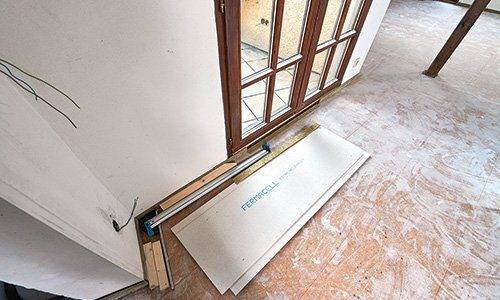
Schritt 2 – Stufenfalz abtrennen

Schritt 3 – Plattenüberstände abtrennen
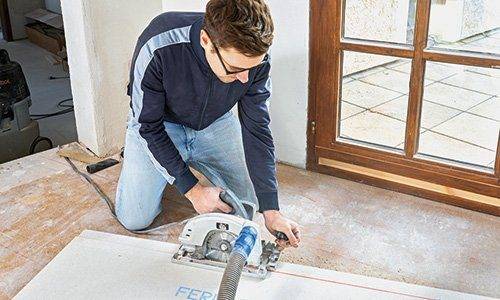
Schritt 4 – Winkel ermitteln
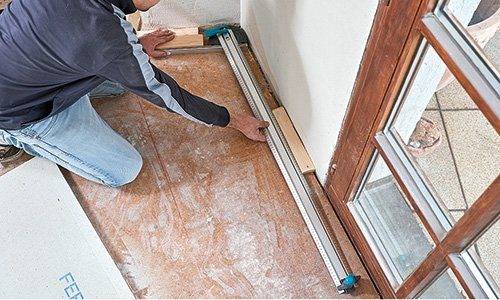
Schritt 5 – Auf Estrich übertragen

Schritt 6 – Randdämmung anbringen
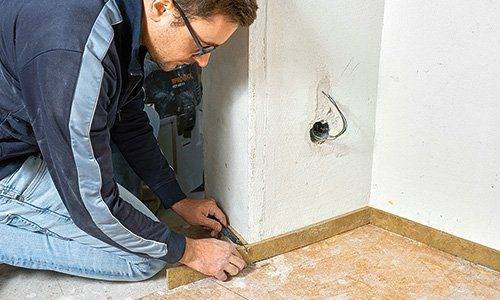
Schritt 7 – Boden verlegen
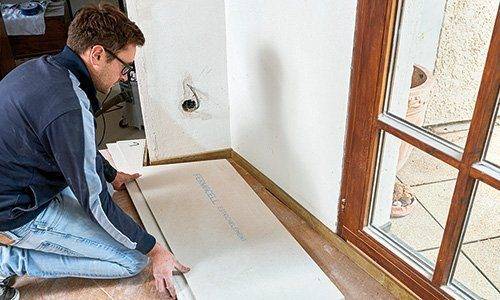
Schritt 8 – Stufenfalz im Detail
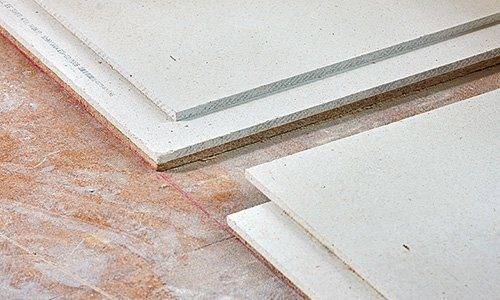
Schritt 9 – Im abgewickelten Raumbereich fortfahren
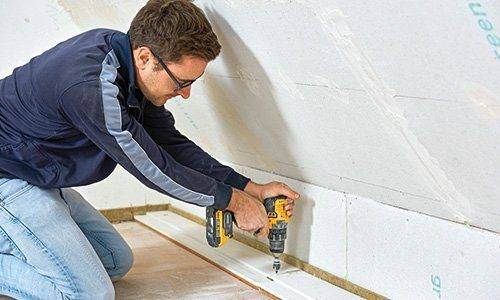
Schritt 10 – Heizkörper einbinden
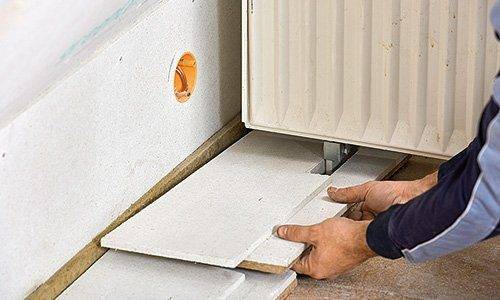
Schritt 11 – Verklebung

Schritt 12 – Platten anlegen
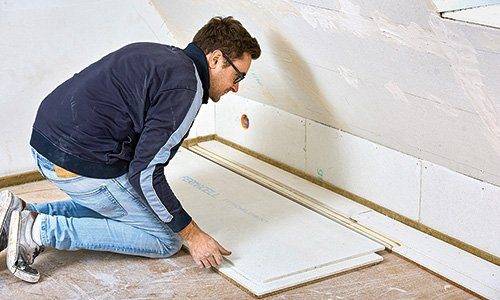
Schritt 13 – Verlegevorgang wiederholen

Schritt 14 – Überblick
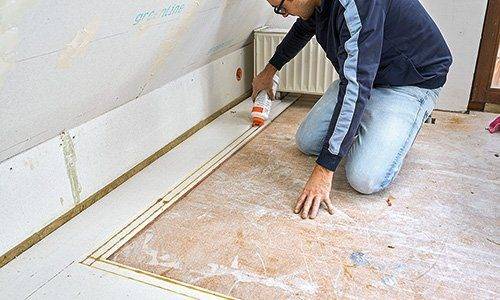
Schritt 15 – Letzte Platte

Schritt 16 – Platten verschrauben
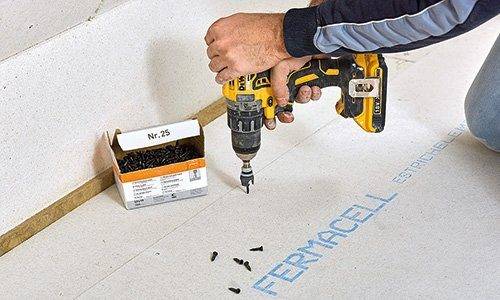
Schritt 17 – Restlichen Raum verlegen
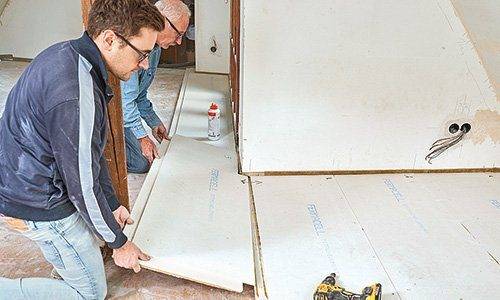
Schritt 18 – Verschrauben
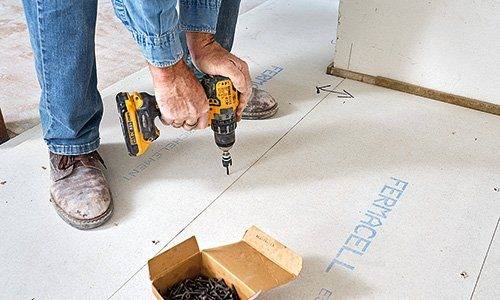
Schritt 19 – Reihen über Raumlänge aufbauen
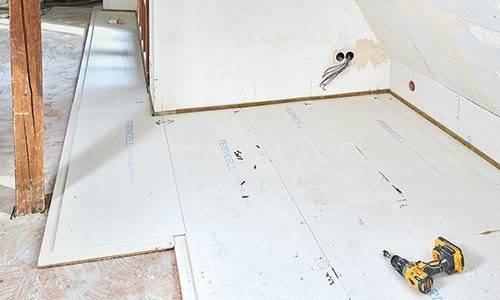
Schritt 20 – Zwischenstück für Holzpfosten
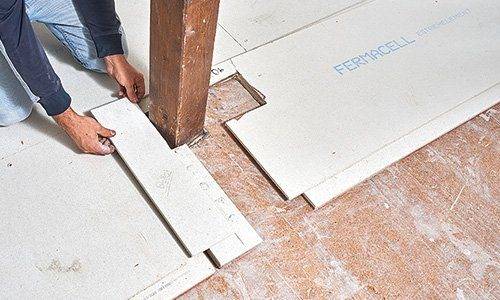
Schritt 21 – Ausklinkung ausschneiden

Schritt 22 – Platz für Dämmung
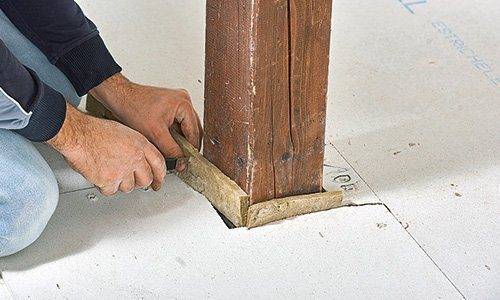
Schritt 23 – Blick auf Gibelseite
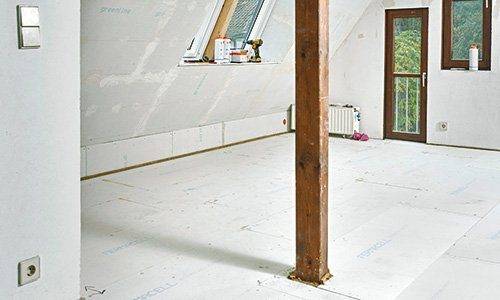
Schritt 24 – Blick in Gegenrichtung
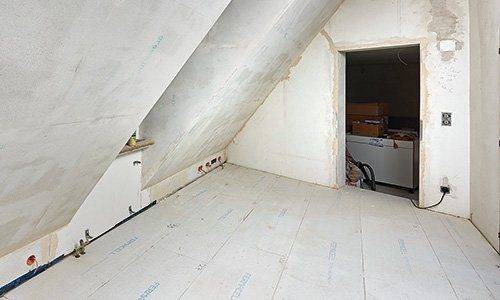
Weitere Informationen
Die Trockenestrich-Elemente basieren auf 10 mm dicken Gipsfaserplatten, die zweilagig und um 50 mm versetzt bereits miteinander verklebt sind (Stufenfalz). Als trittschalldämmende Unterlage sind werkseitig 10 mm dicke Holzweichfaserplatten angetackert. Die Fertig-Elemente messen 1500 x 500 x 30 mm, die Deckfläche liegt bei 0,75 m²/Stück. Die Ausführung als „Greenline“ bietet einen Schadstoffabbau im Wohnraum. Anbieter von Platten, Randdämmstreifen, Kleber und Schnellbauschrauben ist www.fermacell.de.
PDF-Download: Trockenestrich verlegen

